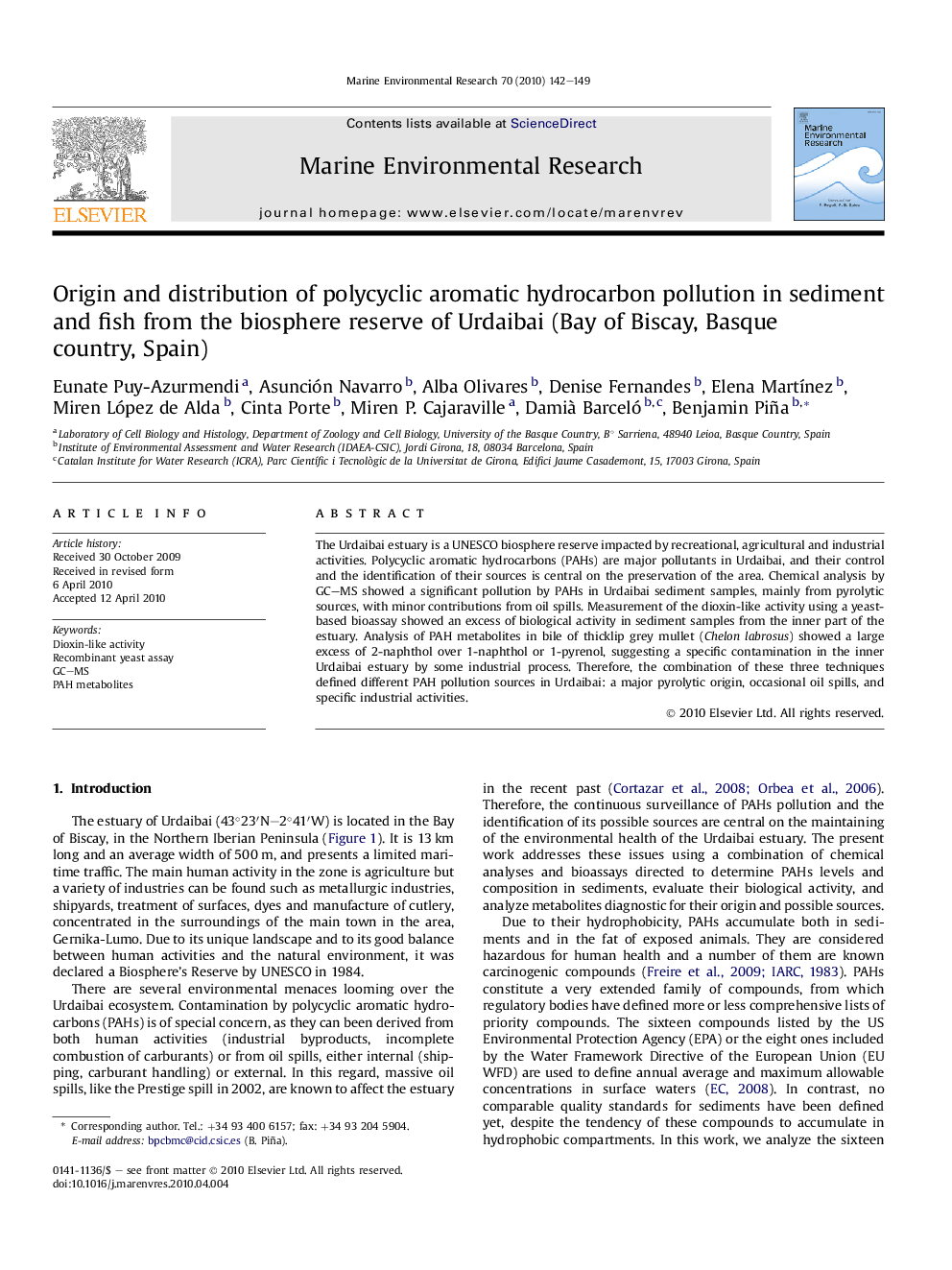| Article ID | Journal | Published Year | Pages | File Type |
|---|---|---|---|---|
| 4551232 | Marine Environmental Research | 2010 | 8 Pages |
Abstract
The Urdaibai estuary is a UNESCO biosphere reserve impacted by recreational, agricultural and industrial activities. Polycyclic aromatic hydrocarbons (PAHs) are major pollutants in Urdaibai, and their control and the identification of their sources is central on the preservation of the area. Chemical analysis by GC-MS showed a significant pollution by PAHs in Urdaibai sediment samples, mainly from pyrolytic sources, with minor contributions from oil spills. Measurement of the dioxin-like activity using a yeast-based bioassay showed an excess of biological activity in sediment samples from the inner part of the estuary. Analysis of PAH metabolites in bile of thicklip grey mullet (Chelon labrosus) showed a large excess of 2-naphthol over 1-naphthol or 1-pyrenol, suggesting a specific contamination in the inner Urdaibai estuary by some industrial process. Therefore, the combination of these three techniques defined different PAH pollution sources in Urdaibai: a major pyrolytic origin, occasional oil spills, and specific industrial activities.
Related Topics
Physical Sciences and Engineering
Earth and Planetary Sciences
Oceanography
Authors
Eunate Puy-Azurmendi, Asunción Navarro, Alba Olivares, Denise Fernandes, Elena MartÃnez, Miren López de Alda, Cinta Porte, Miren P. Cajaraville, Damià Barceló, Benjamin Piña,
